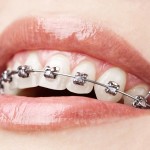
Digital technologies are increasingly being introduced into orthodontic practice. A number of systems are now available providing comprehensive orthodontic treatment package consisting of digital diagnostics, 3-dimensional (3D) digital planning, and computer-designed customized brackets and arch wires. A number of benefits of these new approaches are suggested including better outcomes, shorter treatments and less chair time.
The aim of this trial was to compare orthodontic treatment duration with a customised versus non-customised orthodontic system.
Methods
The study was conducted in two private orthodontic practice in the Netherlands. Patients aged 12-30 years with a complete permanent dentition (except third molars); Angle class Class I, II, or III (off by one-half premolar width or less); and no previous orthodontic treatment scheduled to receive treatment with a full fixed appliance were eligible. They were randomised to either the customised or non-customised groups.
Digital data were collected for the customised group using a digital planning system (Insignia, ORMCO Corporation) and customised brackets and positioning jigs produced. For the non-customised groups orthodontists chose brackets based on experience. The same bonding and curing materials were using in both groups. Loose and lost brackets were replaced as required using the positioning jig (customised) or direct bonding. Arch wires were selected through digital planning for the customised group or orthodontist selected in the non-customised group. Check-ups were scheduled every 8 weeks during the initial alignment stage and then 6 weekly. Emergency visits were scheduled as necessary replacing routine visits if <7 d before a scheduled visit.
The orthodontist decided if a satisfactory result had been obtained at debonding. Post treatment models, photographs and radiographs were taken at 4 weeks. The primary outcome was treatment duration secondary outcomes were, quality of treatment result; the degree of improvement graded using the Peer Assessment Rating (PAR) score with European weightings, number of visits from the first visit after bonding to debonding; number of loose brackets; time required for treatment planning. PAR was assessed by a blinded observer using pre- and post-treatment models.
Results
- 180 patients were randomised (90 per group)
- 174 completed the study (85 customised, 89, non-customised)
- 77 were male and 103 female, with average age of 14.1 y.
- Linear regression analysis showed that patients with a higher weighted PAR score pre-treatment had a longer treatment duration (P ≤ 0.001) and a higher weighted PAR score post-treatment (P ≤ 0.001).
- The orthodontist had significant effects on treatment duration (P ≤ 0.001,
| Customised | Non-customised groups | |
| Mean treatment duration ± SD | 1.29 ± 0.35 | 1.24 ± 0.37 |
| Weighted PAR score before treatment ± SD | 23.32 ± 9.15 | 21.84 ± 7.95 |
| Weighted PAR score after treatment± SD | 5.38 ± 3.75 | 5.93 ± 3.58 |
| Total check-up visits ± SD | 8.91 ± 2.51 | 8.98 ± 3.18 |
- The customised group experienced higher numbers of loose brackets and complaints compared to the non-customised group.
Conclusions
The authors concluded: –
Compared to the non-customized system, the customized orthodontic system was not associated with any significant reduction in treatment duration, and the treatment outcomes were comparable with both systems. Treatment duration and quality were affected by the orthodontist and the severity of malocclusion at the start of treatment rather than by the orthodontic system used. Treatment with a customized appliance, such as the one used in this trial, required significantly more planning time from the orthodontist and was associated with a higher number of visits due to loose brackets.
Comments
This trial did not demonstrate any difference in treatment in relation to treatment quality, duration or number of visits between the customised on non-customised approaches to orthodontic treatment. It is interesting to note the higher debond rate for the customised brackets for the authors note these might have been expected to have a better fit. The authors highlight that it was orthodontists themselves who had the greatest impact on the primary outcome and it would be interesting to see if this remained the case with a broader selection of orthodontists. While no formal cost-effectiveness assessment was conducted it was noted that the customised appliance treatment was more expensive owing to higher laboratory costs.
Links
Primary paper
Penning EW, Peerlings RHJ, Govers JDM, Rischen RJ, Zinad K,Bronkhorst EM,Breuning KH, Kuijpers-Jagtman AM. Orthodontics with Customized versus Noncustomized Appliances: A Randomized Controlled Clinical Trial. J Dent Res. 2017 Jul 1:22034517720913. doi: 10.1177/0022034517720913. [Epub ahead of print] PubMed PMID: 28742420.
